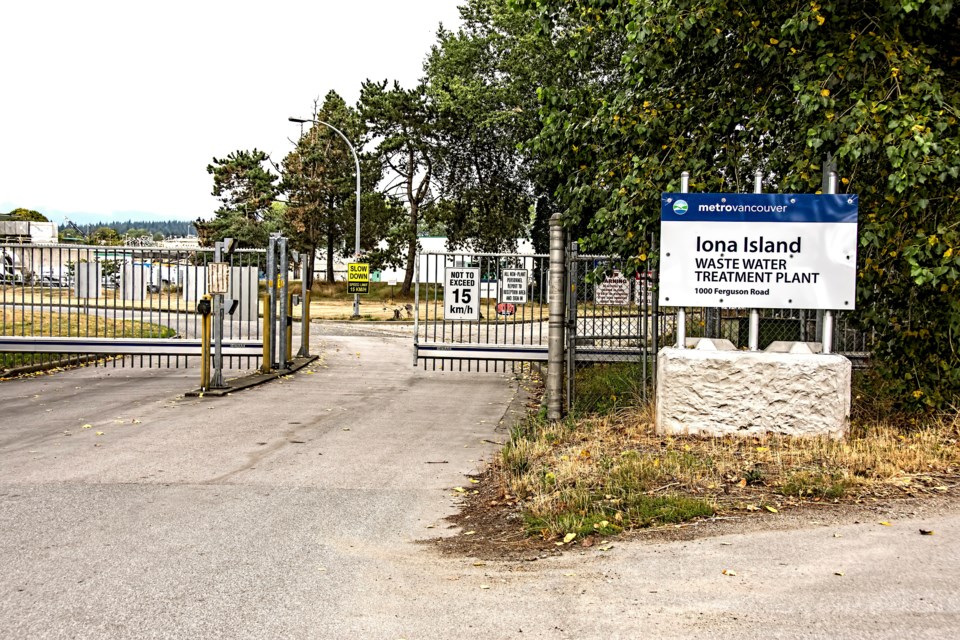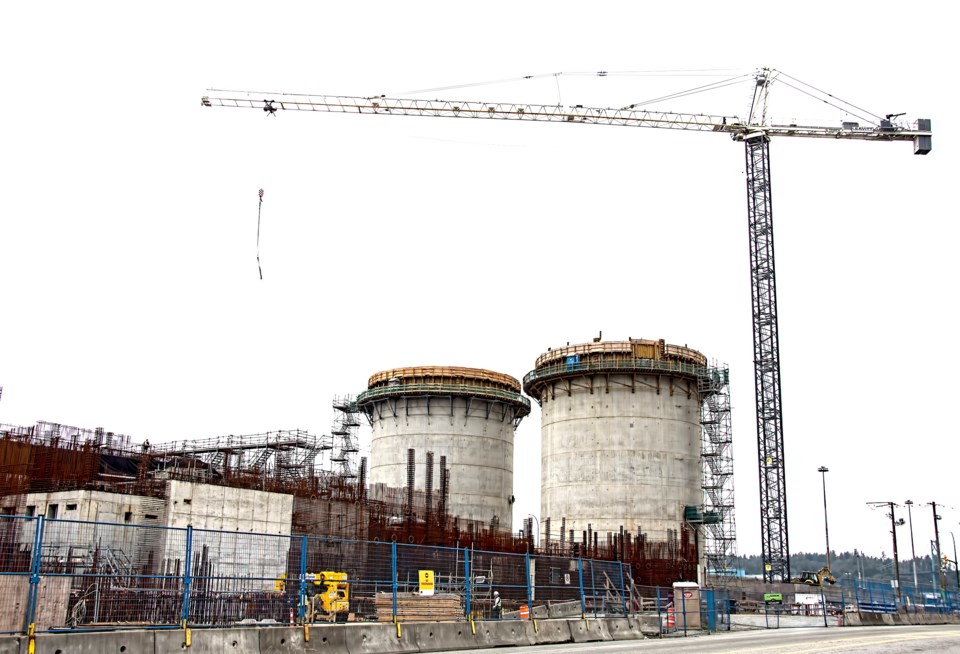Governments may not like it, but they have little option but to invest in sewage and water infrastructure.
The 21-municipality regional government made this clear earlier this year when it announced that the North Shore wastewater treatment plant was running billions of dollars over budget and was to be complete 10 years later than first planned.
“This program is not optional,” Metro Vancouver’s then-board chair George Harvie said in the news release that announced the project update, published late on a Friday afternoon in March.
“Building a new wastewater treatment plant that provides a higher level of treatment is essential to comply with federal regulations, and it is absolutely critical that the facility is built to ensure human health and the environment are protected well into the future.”
The North Shore plant, slated to replace the Lions Gate wastewater treatment plant, is a key component of the region’s sewage infrastructure.
Metro Vancouver first approved the project in 2013, when officials estimated it would cost $700 million and be complete by 2020. Now expected to be finished by 2030, the project’s estimated cost has ballooned to around $3.86 billion.
Taxpayers similarly have little option but to ante up.
Estimates initially showed individuals in the District of North Vancouver having to face $725 in additional taxes annually for 30 years. Those in the rest of Metro Vancouver would have then seen tax bills rise by between $70 and $140 per year in that timeframe, according to local governments.
Metro Vancouver then voted to give North Shore residents some relief, with more money coming from other taxpayers around the region. The latest expected cost for North Shore residents is for an additional $590 per year in each of the next 30 years.
What is worse for taxpayers is that the North Shore treatment plant is not even the priciest wastewater treatment plant planned for the region.
The $10 billion Iona wastewater treatment plant upgrade in Richmond is the priciest project ever undertaken by Metro Vancouver.
It currently only offers primary sewage treatment and must be upgraded to meet a federal requirement that all municipalities provide secondary sewage treatment. Metro Vancouver’s plan is to have the plant upgraded by 2035.

The $10-billion Iona wastewater treatment plant is the most expensive project for which Metro Vancouver has ever embarked. | Chung Chow, BIV
Alongside the Lions Gate and Iona wastewater treatment plants, the region’s three other such plants are on Annacis Island, in Northwest Langley and on Lulu Island.
The region needs these facilities because Metro Vancouver’s regional wastewater system collects and treats about one billion litres of wastewater each day—enough to fill BC Place, according to Metro Vancouver.
The system handles wastewater from homes, businesses and industrial operations. Whenever people flush toilets, wash dishes or do anything else that sends used water into a drain, the wastewater flows through some of the region’s 15,000 kilometres of sewers, according to Metro Vancouver.
The wastewater first flows through municipal sewers, then larger regional sewers. A network of pump stations keeps the wastewater moving through the system to the region’s treatment plants, where it is treated, tested and released into the Fraser River, Burrard Inlet or Georgia Strait, according to Metro Vancouver.
Plant workers at each of the wastewater facilities treat wastewater to remove materials harmful to the environment and public health.
They can also use wastewater to generate heat and electricity, which can make the plants more sustainable by reducing operating costs, needed energy and greenhouse gas emissions, according to Metro Vancouver.
After plant workers remove harmful bacteria, they can make biosolids from treated sewage. Biosolids can then be used to make landscaping soils, to fertilize rangeland, to reclaim mines and gravel pits and to cover landfills to reduce greenhouse gas emissions.
Keeping this system running efficiently is not cheap.
On an ongoing basis, there are countless sewer upgrade projects that run into millions of dollars—and sewage pipes are not always upgraded in time.
Two separate pipes burst, causing sewage to spill into Vancouver’s Olympic Village neighbourhood earlier this year: One in May and another in June.
Metro Vancouver projects also improve clean-water infrastructure
A series of ongoing major tunnel projects across the region aim to secure residents’ access to clean water, particularly in the aftermath of a severe earthquake.
“Replacing water lines and sewer mains and stuff like that is fairly standard and routine, but Vancouver has its main water-delivery lines sitting in pipes that are on the seabed, which makes them highly susceptible to failure in the event of an earthquake,” University of British Columbia (UBC) engineering professor Erik Eberhardt told BIV earlier this year.
He said water pipes across the Fraser River and Burrard Inlet seabeds have long been partly buried and are in loose sediments, which means they are at risk of being torn or twisted apart during earthquakes.
If the region were to keep that old infrastructure, it would risk disruption and episodes where clean water is not accessible, he explained.
Connor Langford, the earth structures group lead at Mott MacDonald—the prime engineering company contracted by Metro Vancouver for multiple water-tunnel projects—praised the regional government for being proactive.
He noted recent water-main breaks in Calgary and in Montreal resulted in water restrictions and boil-water advisories.
“Water infrastructure is critical, and it’s aging, so I think Metro Vancouver is doing a really good job of getting ahead of some of the concerns.”
The regional government recognized this risk and started funding bored water-tunnel replacements in the aught years. Its plan is to have a series of new major water-tunnel crossings.
Workers launched a project to build a one-kilometre-long, $240-million Port Mann Water Supply Tunnel in 2011. They completed it four years later, thereby alleviating the risk for those living south of the Fraser River that their water supply could be disrupted.
Work then launched on the 1.1-kilometre Second Narrows Water Supply Tunnel in May 2019. It is east of the Ironworkers Memorial Bridge, between North Vancouver and Burnaby, and is estimated to cost $286 million.
Final work on that project is underway although it could take years to fully integrate the new infrastructure into the region’s water-distribution system.
The region’s third water-tunnel boring project—the Annacis Water Supply Tunnel—is the longest to date.
The planned $450 million, 2,350-metre-long, 4.5-metre-wide tunnel will rest 50 metres below the Fraser River, between River Road in Surrey and Quebec Street in New Westminster.
Construction on a $379 million tunnel beneath Lost Lagoon in Stanley Park to Chilco Street is expected to launch this fall, said Langford, whose company is the prime engineering company contracted by Metro Vancouver for the project.
That tunnel is set to connect with a Burrard Inlet site, and infrastructure that brings treated drinking water from the North Shore mountains under Burrard Inlet to a connection in Stanley Park.
Future water tunnels related to the region’s water supply are set to include one that is part of an expansion to the Coquitlam Lake Water Supply Project.
There is also a planned Cambie-Richmond Water Supply Tunnel. Langford confirmed Mott McDonald will be the engineer on that project, which will move into a preliminary design phase this fall.


